I am going on week 4(?) of this stupid status migraine and so all my days are blurring together- which is why this newsletter is extra unreliable. I am still reading The Bee Sting - but I am very excited to purchase and read Hilary Mantel’s new and posthumous essays. Hilary Mantel is this Jewish girl’s patron saint. I have been spending a lot of time thinking about Adele Bloch-Bauer, I assume many if not all of you have no idea who she was, I didn’t until a few weeks ago when I started down this rabbit hole (is there another way of saying rabbit hole besides rabbit hole?). I want to attempt to coherently tell you the story of my discovery of Adele Bloch-Bauer and the connection I feel with her by logically communicating and untangling all the information spaghetti that is currently in my head. So let me start at the opening of this rabbit hole.
Part I: the forest painting
A painting that I think about a lot is Gustav Klimt’s ‘Birch Forest’ (1903). I discovered it when the Portland Museum of Art did an exhibition of Paul Allen’s collection following the Microsoft co-founder’s death and before the “billion dollar” auction. I think it was 2015- I had just purchased Harry the Honda (my cobalt blue Honda fit) and this was his first road trip. Seeing this painting in real life is what I would assume is like a religious experience. Reproductions do not do it justice. I stood and looked at it for a good 30 minutes and felt like I was in an Austrian forest, and I could even smell it. Unfortunately for all of us - you will probably never be able to see it because it is in some billionaire’s private collection - most likely in a storage locker somewhere in Switzerland. But thinking about this painting led me to do further research on the provenance of the painting, I vaguely remembered a story about Nazis stealing the painting from the original Jewish owners. This I soon discovered was a well-publicized story about five Klimt paintings that were stolen from the Bloch-Bauer family in Vienna in 1938 and then returned to the family in 2006 after a complex legal battle between the Austrian government and Maria Altmann (the niece of Adele Bloch-Baur). This legal battle inspired a book and a movie starring Helen Mirren and Ryan Reynolds (the movie is terrible btw). The legal battle is interesting, but not what kept me digging.
Part II: Adele Bloch-Baur II
I went searching for all five of the paintings, the most famous of which is Adele Bloch-Bauer I, which was retitled by the Nazis “Woman in Gold.” All five paintings are STUNNING and all of them are in private collections, except Adele Bloch-Bauer I which is on display at the Neue Galerie in NYC. The one that really caught my attention was Adele Bloch-Baur II – I have no words for it. I am terrible at describing art- so I am not going to embarrass myself. I feel like she isn’t just a model- but she has a story to tell and the only way she can attempt to tell it is by being a muse and not with her own voice.


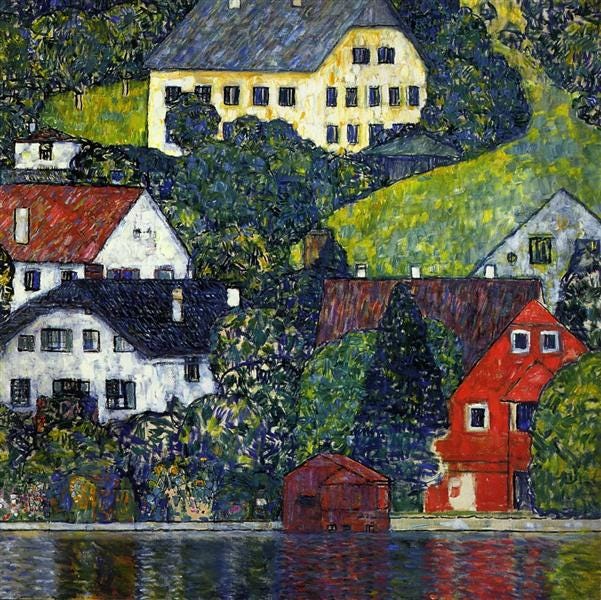
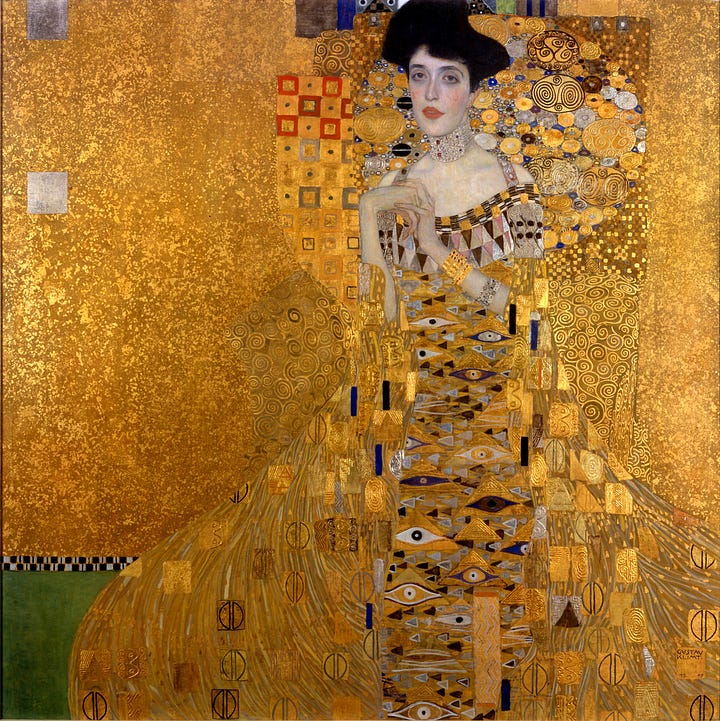
As for a brief biography of Adele, she grew up in a wealthy Jewish family in Vienna and married her sister’s brother-in-law (Ferdinand Bloch) when she was 18 and he was 34. Like most marriages at the time, it was an arranged marriage, although Ferdinand seemed to be completely besotted with Adele. He did hyphenate their names. Adele spent her time reading classic literature in French, German, and English. She hosted weekly salons with some of the most impressive intellectuals and artists of the 20th century. She was also chronically ill and in all the disappointingly short biographies I have come across about Adele include the word “delicate”, “smug”, “cold”, “intellectual”, “arrogant”, my favorite that she “…gave the impression of someone who suffered.” Adele had three miscarriages and a stillbirth. She did manage to give birth to a son who died within a day. Adele died in 1925 at the age of 43. I want to say to those critics – “she did fucking suffer.”
Part IV: What I think when I think about Adele Bloch-Bauer
When I think about Adele, especially when I look at Klimt’s Adele Bloch-Baur II portrait I see a woman who is locked in a glass cage watching the world go on without her. She surrounded herself with a world that she was unable to participate in – both due to her sex and her health, both having to do with her body. She was unable to provide what she was supposed to provide, children and she was forced to sit on the sidelines and support the great thinkers of her day because she was unable to be one. What is it like when you are unable to achieve what society expects from you and what you so desire for yourself. What happens when you are unable to have children, a career, or to be able to do what brings you joy – but you are constantly reminded of both those losses. Everything you ever wanted is dangled right in front of you, but you are physically unable to obtain it. This is something that I wrestle with daily. There are endless stories about woman who are unable to have children and there are endless stories about women who are unable to achieve their professional and intellectual potential. But what about the stories about the loss of both?
I see a woman in an immense amount of pain. Klimt’s portraits of Adele are always described as “sensual” and “erotic” because he broke so many rules around sexuality in his work. I saw that when I first looked at the portraits, but I no longer see it, specifically in the second one. It is obvious of Klimt’s 1901 painting of Judith and Holofernes, which is also of Adele. I see suggestions of eroticism and playfulness in Adele Bloch-Bauer I (1907), but by the last portrait in 1912 I no longer see it. I also think that interpretation is so simple for such a complex portrait.
In both Adele Bloch-Bauer I and Adele Bloch-Bauer II Adele’s hands are uniquely positioned and empty- but are covered in and surrounded by culture, luxury, beauty, and elegance. I read somewhere that Klimt did this because Adele always used her hands to speak- but all I see is that they are desperately empty.
I really enjoyed researching, thinking about, and writing this piece. I could write a much longer essay on this - but I wanted to keep this short and finish it. Maybe one day I will flesh it out. There are a lot of directions I could have taken, and I highly recommend reading some of the links I have left throughout this newsletter. I will include others below that I found intriguing and that I had originally included.
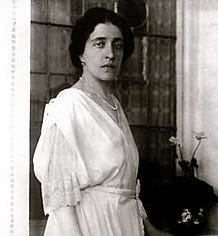
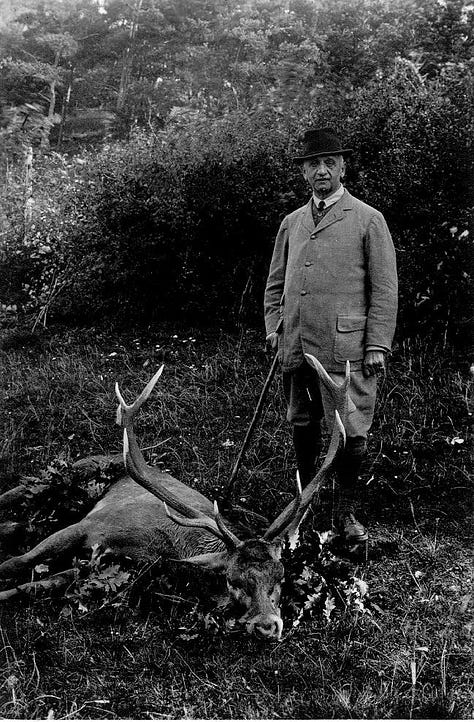
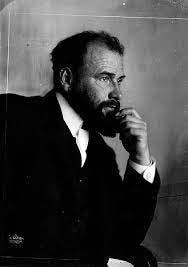
Klimt, along with other artists, architects and designers broke away from the more traditional Austrian artistic style and started the Vienna Secession art movement.
Adele sat for Klimt for two portraits, one commissioned by Ferdinand. The price of commission for a Klimt at the time was 4,000 Austrian krone, which would be about USD 25k today. I figured that out through this website - how cool is that.
The Nazis did a retrospective of Klimt’s work in 1943 at the Secession gallery in Vienna - right after the Russian victory in Stalingrad. They were the ones to change the name of the painting, ‘Adele Bloch-Bauer II’, to ‘The Woman in Gold’ (I think I can assume that we all know why).
Adele’s niece, Maria Altmann, sought to reclaim five Klimt paintings from the Austrian Government that had been seized by the Third Reich. She did eventually win, but that is another rabbit hole to go down. Altmann is an interesting woman in her own right, she is played by the great Helen Mirren in the unexceptional movie Woman in Gold with Ryan Reynolds.
The November 8, 2006 Christie’s auction was expected to be a record setting auction and it was. The total earnings for the four remaining works was $192.7M. But the paintings would just more and more valuable over the next decade.
‘Adele Bloch-Bauer II’ was purchased by Oprah at the 2006 auction for $87.9 million and then she sold it for $150 million to an anonymous Chinese buyer in 2016. At the moment this one is my favorite of the five paintings - it is just stunning.
‘Apple Tree I’ sold for USD 33,056,000 at the auction to a private collector. ‘Houses at Unterach on the Attersee’ sold for USD 31,376,000 in 2006, also to a private collector.





Naomi, thank you so much for exposing me to these beautiful paintings and "introducing" me to Adele Bloch-Bauer. I learn so much from you and when I saw your newsletter in my inbox this morning, I was absolutely delighted! I'm already looking forward to the next one.
This post was so poignant it made me really emotional, it’s beautifully written. I can relate to this right now a lot more than you know. I think this has the potential to be a book if you ever wanted to take her story in that direction.